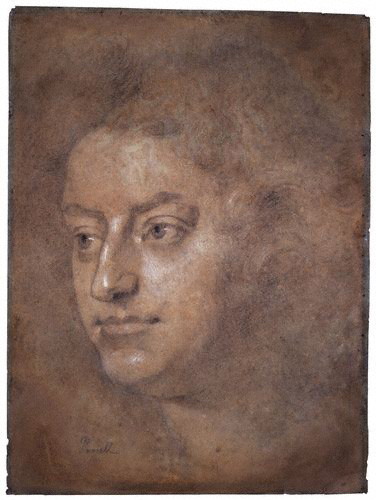

|
Henry Purcell holds a special place in the hearts of Englishmen. The reasons for this can be summed up quite simply. His music is ravishing, unparalleled in his text-setting and full of expressive dissonances. Before his untimely death, at age 36, likely of tuberculosis, Purcell had become organist at Westminster Abbey and the Chapel Royale, penned the first English opera, Dido and Aeneas, composed music for the coronation of James II, and the funeral of Queen Mary II. After his death, England would not have another composer of similar stature until the twentieth century. Fittingly, Purcell is buried next to the organ at London's Westminster Abbey. An Evening Hymn is the opening work of Henry Playford's 1688 collection Harmonia Sacra and sets words by "Dr. William Fuller, late Lord-Bishop of Lincoln" as published in Nahum Tate's collection of moralizing poems for children Miscellanea Sacra. It's hard to conceive of what sort of context this composition was performed; it certainly wasn't intended for liturgical performance and perhaps not even public performance. If there were any sort of public performance it may have been a small private gathering or simple domestic devotional service. Things to Note Throughout the song, Purcell uses a repeating five measure figure known as a ground bass. It can be heard in its entirety at the work's beginning. Atop that, he writes a melody that sometimes matches the five-measure phrase of the bass and other times doesn't - it is this tension that propels the work forward and makes it continuously interesting. In performance a continuo group would improvise an accompaniment based on the implied harmonies of this bassline. After the first measure of the seventh repetition of the bassline, Purcell shifts the ground bass up a few pitches for the line "and can there be any so sweet security?" before returning to the original pitches for one measure and shifting the bassline down to the dominant for three repetitions before returning the ground bass to its original pitch for the remainder of the song. The ground bass itself is an elaboration of a descending four-note figure, a figure that some feel is emblematic of lament owing to its appearance in many laments, among them Purcell's famous aria "Dido's Lament" from Dido and Aeneas. Evening Hymn is also an example of a ciaccona or chaconne, a composition built on a repeating descending bassline in a triple meter. Originaly the ciaccona/chaconne was used for upbeat music, but by the mid-17th century had the figure had come to be reserved for stately, elegiac music. |
 |
TextNow that the Sun hath veil'd his Light, And bid the World good Night; To the soft Bed, my Body I dispose, But where shall my Soul repose? Dear God, even in Thy Arms, and can there be Any so sweet Security! Then to thy Rest, O my Soul! And singing, praise The Mercy that prolongs thy Days. Hallelujah! |
|
Soprano Emma Kirkby (video follows score) Countertenor Alfred Deller Countertenor James Bowman Michael Golod, boy soprano |
| 0:00 | First presentation of ground bass | |
| 0:12 | Now that the sun hath veiled his light... | Entry of voice |
| 0:52 | ...soul repose... | Touching dissonance in voice. (Technically a modal-seventh) |
| 1:11 | and can there be any so sweet security? | Harmonic instability as ground bass shifts to different places |
| 1:39 | Then to thy rest... | Ground bass moves to dominant. Madrigalism at "rest." |
| 2:00 | and si-i-i-i-nging praise... | Ground bass returns to original pitch. |
| 2:32 | Hallelujah. | molto melisma! |